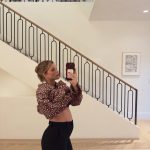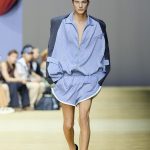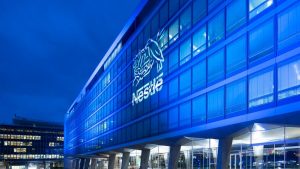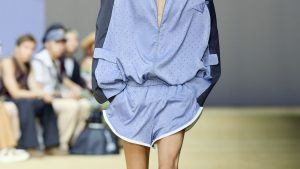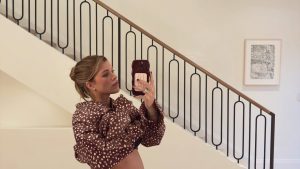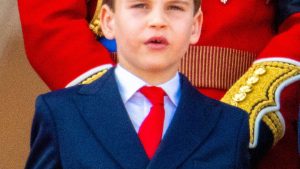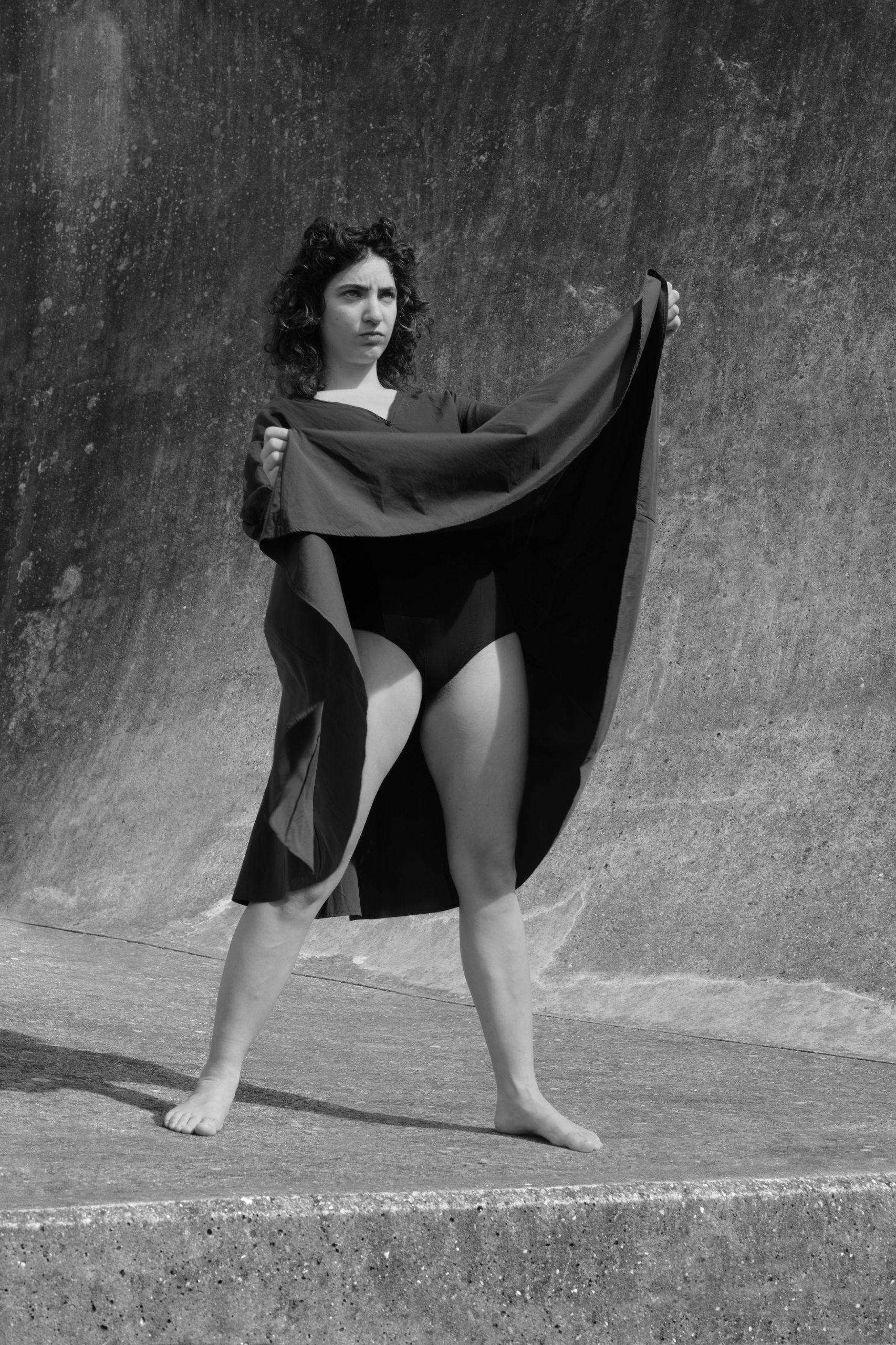
The exhibition reawakening women’s resistance and fight for freedom from the past.
On October 11th, the Musée des Beaux-Arts Le Locle (MBAL) inaugurated its rich autumn program of exhibitions, on view until March 1st, 2026. The museum invited artists whose work spans photography, painting, sculpture, and design in an eclectic selection spread across its spaces.
Klodin Erb, Planetarium. Courtesy the artist and Galerie Urs MeilePhilipp Hitz
In Decorative Chaos Dress to Impress, his first exhibition at MBAL, Koenraad Dedobbeleer recontextualises and reimagines anonymous works from the museum’s collection, prompting viewers to question the mutable nature of objects depending on the context in which they are situated. Swiss artist Klodin Erb presents Toutes le savent, même les anges, an exhibition that intertwines art history, myth, pop culture, literature, and digital imagery, constantly redefining the boundaries of painting and the diverse techniques she employs in her practice.
Koenraad Dedobbeleer, Underground Disruption, 2018, Spray painted wood, stainless steel, enamel on wood, 215 x 78 x 50 cm
Urs Lüthi, Spazio Umano (the Enemy), 2018. Copyright Urs Lüthi, VG Bild-Kunst, Bonn.
L’une ou l’autre vérité (One or the Other Truth) by Urs Lüthi, who represented Switzerland at the Venice Biennale in 2001, is an ironic exploration of identity, the self, and self-portraiture—particularly in a contemporary era shaped by performative and self-referential images. Théophile Calot, director of the delpire & co bookstore in Paris, presents a collection of bookends designed by various artists and artisans in the museum’s new library space.
Bookend by Cléo Charuet.
Among the exhibitions is Elles obliquent elles obstinent elles tempêtent (They Skew, They Persist, They Storm) by artist Agnès Geoffray and curator Vanessa Desclaux. Premiered at the Rencontres de la photographie in Arles 2025 and co-produced with MBAL, the exhibition brings together Geoffray’s photographs and archival materials from three French public institutions for girls—Cadillac, Doullens, and Clermont de l’Oise—known as “preservation schools” that operated from the late 19th to the mid-20th century. Interweaving imagery and poetic text, Geoffray and Desclaux’s work recounts the lives of girls deemed deviant according to the social and moral norms of their time.
La femme penchée, 2023. Tirage pigmentaire, contrecollé alu 1mm, encadré, 160 x 110 cm.Agnès Geoffray
Les échappées III, 2024. Tirage pigmentaire, contrecollé alu 1mm, encadré, 60 x 90 cm.Agnès Geoffray
Les échappées I, 2023. Tirage pigmentaire, contrecollé alu 1mm, encadré, 60 x 90 cm.Agnès Geoffray
Contrasting with the archival materials—framed in a bright, chemical, almost red-pink shade —the black-and-white photographs depict young girls standing together, facing the camera alone, moving, jumping, leaning, showing a fist, a hip, a leg. Though dressed in shapeless, modest clothing, they seem to exceed the limits of their garments and assert themselves with stubborn presence. In their fierce, deadpan gazes and messy hair mid-jump, we glimpse liveliness, strength, and pride once marked as deviance.
Elles obliquent elles obstinent elles tempêtent is an imaginary work grounded in historical documentation, reminding us of photography’s power to draw lines and stitch together imagination and reality—giving voice to those forgotten, faceless, and lost in the folds of history.
Les orageuses III, 2023. Tirage pigmentaire, contrecollé alu 1mm, encadré, 85 x 56 cm.Agnès Geoffray
Since the themes explored by Geoffray and Desclaux resonate with those we investigated through our Global open call Women by Women, we sat down with them to discuss their work.
How did the collaboration come about, and what was the process like? What sparked the idea for this project?
Vanessa Desclaux (VD)/Agnès Geoffray (AG): We have known each other since 2010 and we had collaborated on different projects before. Agnès Geoffray was invited for a residency by Frac Nouvelle-Aquitaine MECA in Bordeaux to work specifically with the archives of the Chateau de Cadillac, which was a women prison in the 19th century, and a girl’s reformatory school (1891 – 1951). Vanessa Desclaux followed the project and, as it came to an end in Bordeaux, suggested continuing the research collaboratively to explore the archival resources of two other reformatory schools in Doullens and Clermont de l’Oise.
Les déployées I, 2024. Tirage pigmentaire, contrecollé alu 1mm, encadré, 127 x 85 cm.Agnès Geoffray
The title reminds me of Adriana Cavarero’s feminist philosophy of ‘Inclination’ — a turn away from the straight, isolated and disciplined body. Why did you choose this title, and how does it reflect the project’s themes?
VD/AG: When we started collaborating, we had a specific focus in mind; we wanted to explore further the acts of resistance, indiscipline and rebellion that the girls managed to maintain while being controlled and imprisoned. They were accused of being perverse, corrupted, of deviating from the norms of their gender. This notion of “deviation” brought up the motif of the oblique. In our title, and in the broader context of our work, we insisted on considering them as active and conscious political subjects, and thus we considered their vitality and their agency.
Les orageuses I, 2023. Tirage pigmentaire, contrecollé alu 1mm, encadré, 85 x 56 cm.Agnès Geoffray
You incorporate text alongside visual media — what drew you to this combination, and how do the different forms interact or challenge each other?
AG: For a long time, my photographic work has developed alongside my writing. For the first time, for this exhibition, I have closely associated images with texts. The texts have a poetic and political content; they act as offensive poems, as verbal ripostes to the violence suffered. The texts are not an illustration of the images; they have their own autonomy. The photographs reveal and refigure these anonymised and forgotten bodies, and the words give voice to the silenced and buried voices. The texts and images together allow the fury and revolt of these oppressed bodies to emerge.
Lucas Olivet
You worked with archival material — what was that experience like? How did you avoid falling into the trap of ‘archival fever’ or nostalgia, and instead make the past resonate with the present?
VD/AG: We spent time in the archives together, looking for specific documents relating to revolts, evasions or mutinies. We encountered documents related to how they were punished, humiliated, or disqualified. Yet we also identify a multiplicity of gestures witnessing forms of solidarity, friendship and love. We heard stories about the messages they were exchanging, the songs they sang as ways of rallying. They suffered any forms of verbal and physical violence, and yet they could not only be considered as victims. Although we could not identify them as feminist activist, we found in the history of women struggles and in feminist epistemologies different historical and critical tools to situate the history of these incarcerated girls in a broader political context that bridges with our lives, with our present political condition.
Lucas Olivet
The work speaks to the control exerted over minds and bodies. How did you visually translate these often-invisible structures of power into contemporary imagery?
AG: My photographic work revolves around the ambivalence of gestures and postures. I did not seek to illustrate a particular narrative but rather to show the power of bodies in revolt: raised fist, lifted skirt, body escaping through flight or jump. My photographs are in black and white, which gives a timeless dimension to the images, and makes it possible to convey other histories of uprising. The apparent simplicity of my photographs allow the viewers to project different images and narratives, which resonate with historical or contemporary events.
Levée, 2024. Tirage pigmentaire, contrecollé alu 1mm, encadré, 80 x 54 cm.Agnès Geoffray
There’s a strong focus on the body, particularly the clothed body (and therefore the naked body). What role does clothing play in your exploration of identity, gender, and constraint?
AG: The clothes, though contemporary, evoke a past temporality and therefore appear indefinite. In preservation schools, the imprisoned young girls wore shapeless, identical clothes in order to deny any form of femininity. In some of my photographs, the skirts rise, revealing the pelvises, thus revealing the pelvic power of women. Veiling and unveiling: my photographs represent this double injunction made to women cited by the historian Michelle Perrot: “Woman is an image. She either has to hide or show herself.”
Les orageuses II, 2023. Tirage pigmentaire, contrecollé alu 1mm, encadré, 85 x 56 cm.Agnès Geoffray
What was your research process like? Were there any unexpected discoveries or turning points that shaped the final outcome?
VD: The research process was at times frustrating because the archives of these institutions could be difficult to locate because they had been dispersed, particularly due to the Second World War. We were hoping to find more documents transcribing their own voice, or traces of their writing. There were almost none, apart from the writings of Albertine Sarrazin – L’astragale and La Cavale were both published in 1965 – who escaped from the reformatory school of Doullens in 1957, jumping from its high walls.
What does girlhood mean to you — personally, politically, and artistically?
VD: Girlhood is a time of experimentation, a very intense period of the construction of a personal and social identity. It brings together strength and vitality, as well as vulnerability. Going through the archives but also reading the works of eminent historians such as Veronique Blanchard, Beatrice Koeppel or Françoise Tetard, we realised that there is a form of social and political continuum considering girlhood through the unique lens of sexuality, which society wishes to repress.
AG: Adolescence is a time of transition, of revelation, sometimes of painful injunction. Through the photographs and texts of the exhibition, I insisted on the dimension of the oblique body, of the female body as a dissident body and a body that extracts itself from the norms. Claiming the female body as a disobedient figure.
Your images feel suspended in time — both historical and contemporary.
AG: Suspension is a recurring motif in my work. For me, it evokes a time of latency, of non-fatality, between fall and rise, a time when everything is still possible. The suspended female bodies represent resistant bodies, which prevent the fall, and rise again.
Lucas Olivet
How do you see these themes manifesting in girlhood today? Where can we trace acts of resistance or refusal in the current cultural landscape?
VD: It is difficult for me to say; I have the impression that there is a great diversity of situations depending on social and cultural privileges. Society is polarised; inequalities and discrimination sadly thrive. In many ways society continues to function as a patriarchal system that tends to oppress women of all ages. However, in the art school where I teach, young women do not hesitate to defy standardised norms of femininity; they challenge gender binaries and are actively engaged in current feminist debates and struggles.
I assume you envisioned this exhibition being seen by girls. What would you like them to take away from it?
VD: Yes, we wish this exhibition to be shown to a great diversity of audience, including adolescents and young adults, men and women. It was very important for us to give more visibility to a history that is little known and bring to light the existence of these young women who were imprisoned based on moral judgement and flawed motives. Although we know very well how much violence they suffered, we wanted to show their strength and their vitality so they play a part in the feminist histories that we want new generations to remember and pass on to the next.




